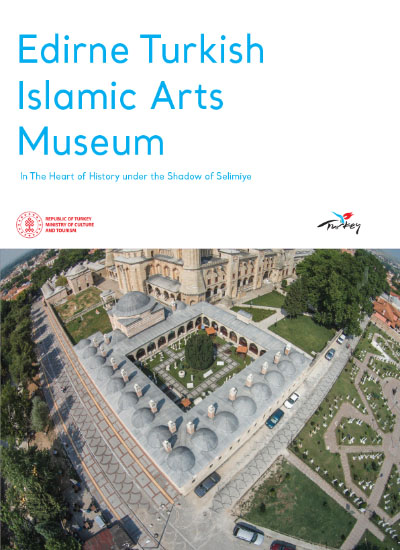The Archaeology Museum of Edirne was established in 1924 by Dr. Rıfat Osman, Arif Dağdeviren, and Necmi İğe upon an order from Atatürk. Originally located in Dar’ül Hadis Madrassa of Selimiye Mosque, the museum hosted valuable ethnographic artifacts and tombstones. Over time, the number of artifacts increased through acquisitions, donations, and excavation findings, leading to the need for a new museum in Edirne. In 1971, a new Archeology and Ethnography Museum was opened, and the museum in Dar’ul Hadis Madrassa was renamed the 'Turkish Islamic Arts Museum'. Since 1924, the madrasa has functioned as a museum, consisting of a main classroom, student rooms, and a courtyard with a porch. Edirne, which was the capital of the Ottoman Empire and a significant city in the 17th century, holds historical significance. The Ethnography Museum showcases the ethnographic identity of the city by exhibiting regional clothing unique to the Balkans, wooden chests, calligraphy plates, and examples of the Edirnekari ornament technique. The courtyard displays rare 15th-century tombstones and Janissary tombstones. The garden features inscriptions from Ottoman-era buildings, as well as cannons and cannonballs used during the Balkan War for visitors to view. The museum visit begins with the Room for Paying Respect to Sinan The Great Architect, which houses a statue of Sinan the Architect. On the walls, there are pictures depicting the Kaaba, as well as secco and plaster ornament examples that were recovered during the repair of Manuscripts of Selimiye Mosque. The museum displays a variety of historical artefacts, including the Ottoman Coat of Arms that was once located above the gate of Bab’üs Saade, inscriptions from various buildings, wooden ceiling rosettes from Edirne houses dating back to the late 19th century, door wings from the Beyazıt Complex crafted using the kündekari technique (without the use of nails or glue), ceremonial shields from the 18th century, as well as swords, lances, and cast candlesticks. The Tekke Room (Dervish Lodge) houses calligraphic plates from various tekkes. The glass and niche displays showcase various items, including photos of Edirne Muradiye Mewlewi House, a prayer rug belonging to its last sheikh Ahmet Selahattin Efendi, kudüms, castanets, neys, rebabs, healing bowls, tebers, and a Koran manuscript from the 15th and 19th centuries, as well as prayer books.
TURKISH ISLAMIC ARTS MUSEUM


